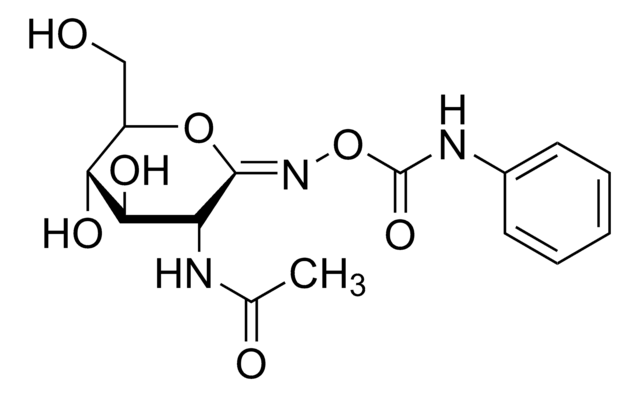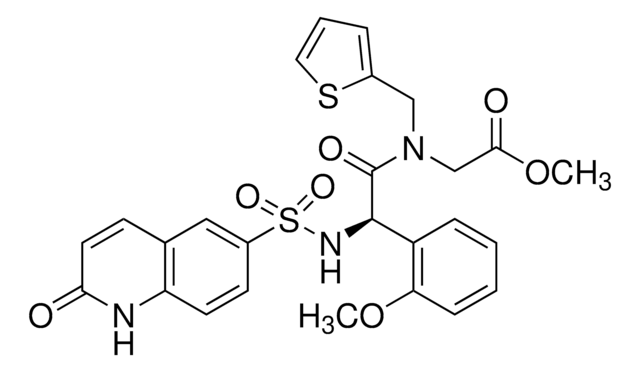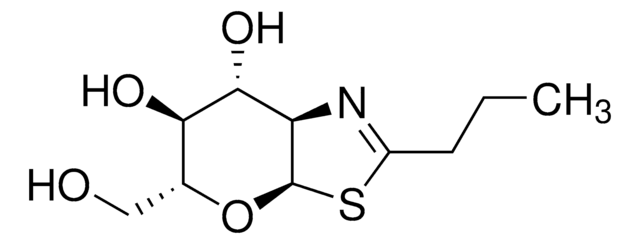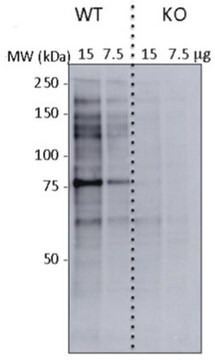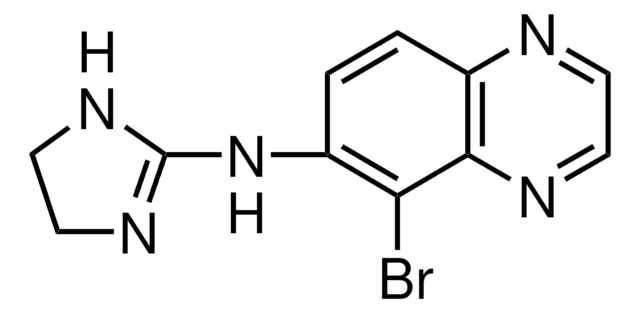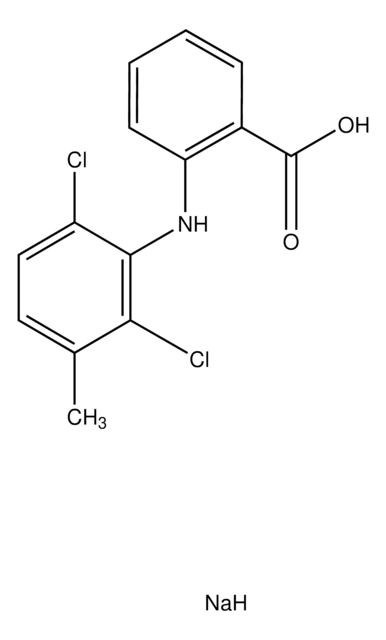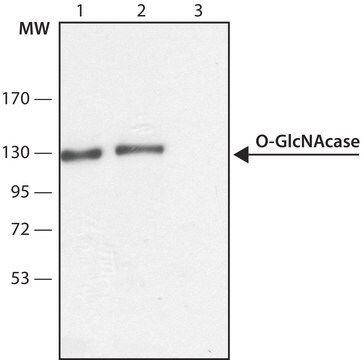Wichtige Dokumente
SML0244
Thiamet G
≥98% (HPLC)
Synonym(e):
(3aR,5R,6S,7R,7aR)-2-(ethylamino)-3a,6,7,7a-tetrahydro-5-(hydroxymethyl)-5H-Pyrano[3,2-d]thiazole-6,7-diol
About This Item
Empfohlene Produkte
Qualitätsniveau
Assay
≥98% (HPLC)
Form
powder
Optische Aktivität
[α]/D -21 to -26°, c = 0.3 in methanol
Lagerbedingungen
desiccated
Farbe
white to beige
Löslichkeit
H2O: ≥5 mg/mL at warmed to 60 °C
Lagertemp.
−20°C
SMILES String
CCNC1=N[C@@H]2[C@@H](O)[C@H](O)[C@@H](CO)O[C@@H]2S1
InChI
1S/C9H16N2O4S/c1-2-10-9-11-5-7(14)6(13)4(3-12)15-8(5)16-9/h4-8,12-14H,2-3H2,1H3,(H,10,11)/t4-,5-,6-,7-,8-/m1/s1
InChIKey
PPAIMZHKIXDJRN-FMDGEEDCSA-N
Suchen Sie nach ähnlichen Produkten? Aufrufen Leitfaden zum Produktvergleich
Anwendung
- to treat human embryonic kidney 293 cells in order to study its effect on Wnt/beta-catenin signalling
- to treat lytically-replicating producer
- to incubate mice (C57BL/6) aortic segments to increase global O-GlcNAc levels
Biochem./physiol. Wirkung
Signalwort
Warning
H-Sätze
Gefahreneinstufungen
Skin Sens. 1B
Lagerklassenschlüssel
11 - Combustible Solids
WGK
WGK 3
Flammpunkt (°F)
Not applicable
Flammpunkt (°C)
Not applicable
Hier finden Sie alle aktuellen Versionen:
Besitzen Sie dieses Produkt bereits?
In der Dokumentenbibliothek finden Sie die Dokumentation zu den Produkten, die Sie kürzlich erworben haben.
Kunden haben sich ebenfalls angesehen
Unser Team von Wissenschaftlern verfügt über Erfahrung in allen Forschungsbereichen einschließlich Life Science, Materialwissenschaften, chemischer Synthese, Chromatographie, Analytik und vielen mehr..
Setzen Sie sich mit dem technischen Dienst in Verbindung.